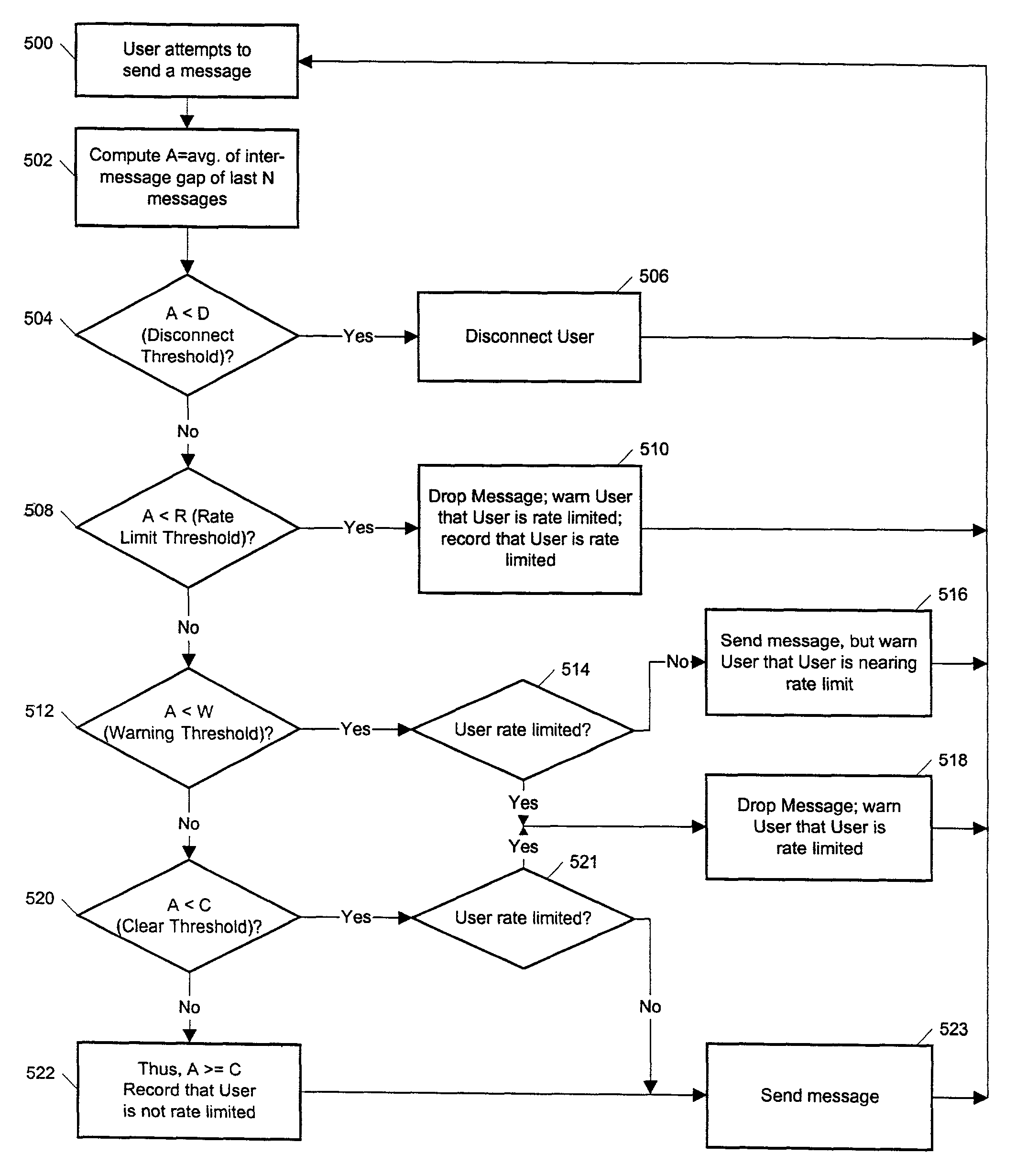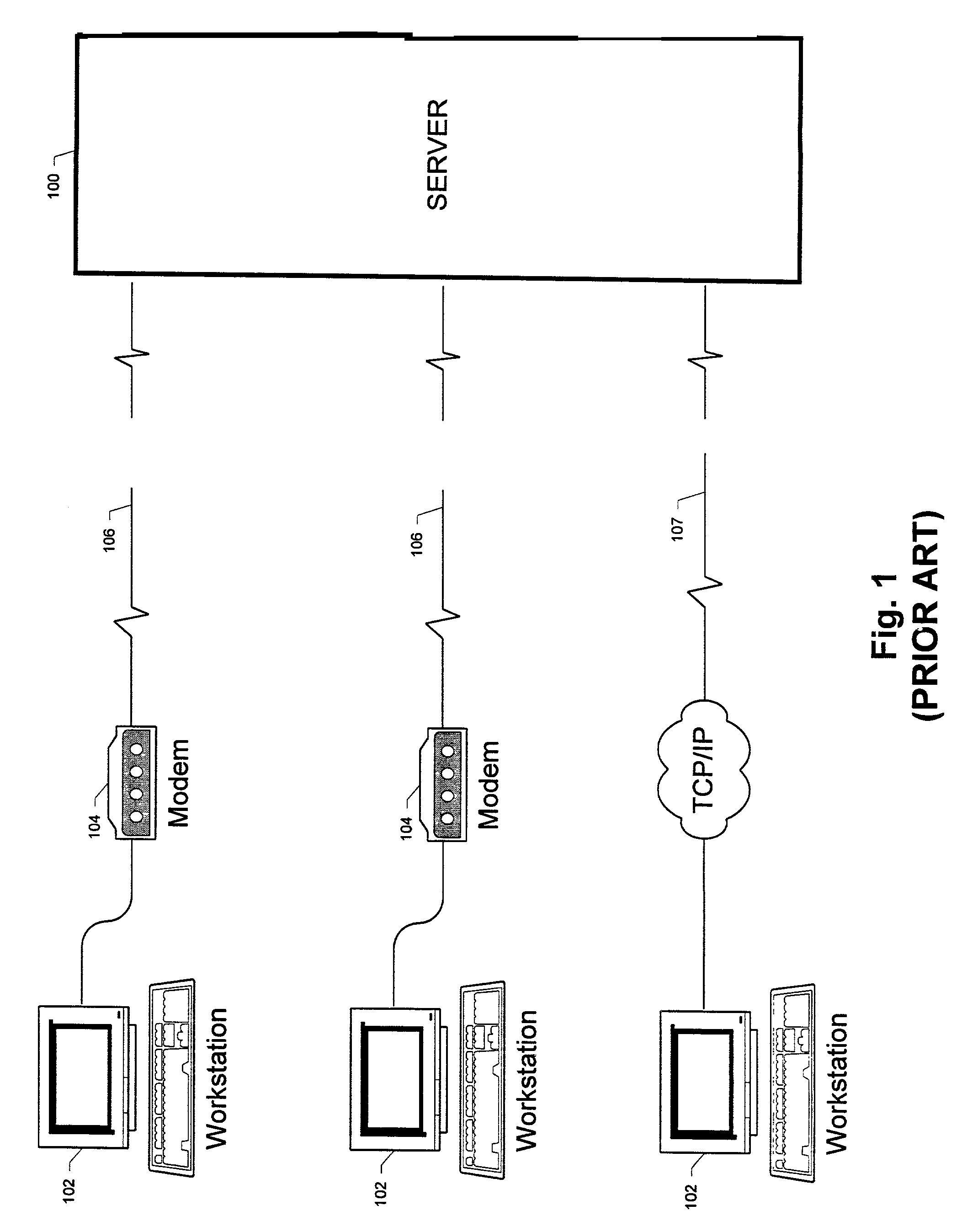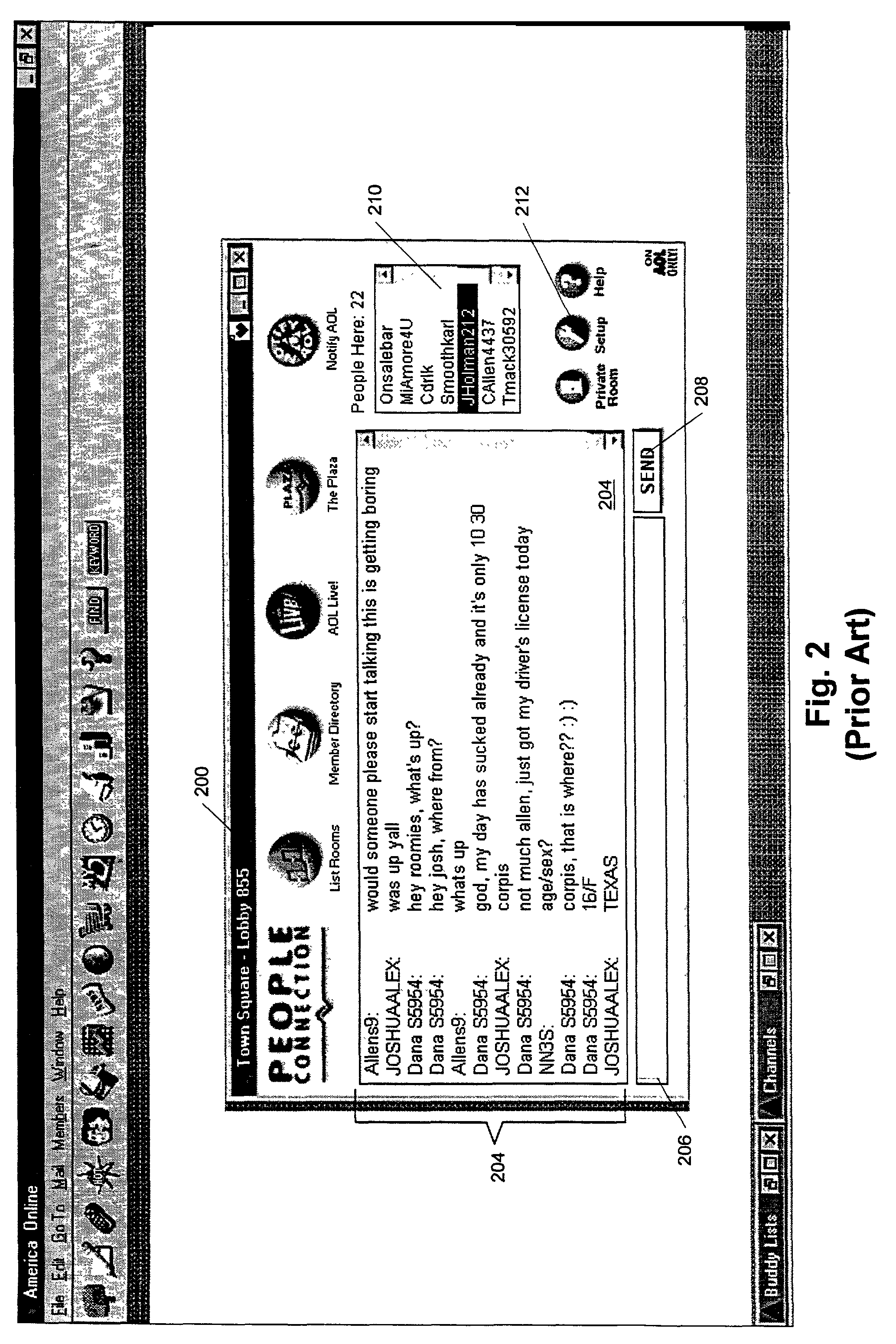Regulating users of online forums
a technology for regulating users and online forums, applied in the field of distributed computer services, can solve problems such as objectionable behavior of participants, participants who overly “flame” other participants, and most likely to be “flamed”
- Summary
- Abstract
- Description
- Claims
- Application Information
AI Technical Summary
Benefits of technology
Problems solved by technology
Method used
Image
Examples
Embodiment Construction
[0031]The prospect of millions of concurrent users of an online computer system puts great pressure on the ability of the system provider to police abusive participants. Accordingly, the invention provides a self-policing online environment that makes participants responsible for their behavior. That is, other participants can express an opinion about that behavior, and have that opinion affect the offending user in a negative way and be “visible” to other participants. Providing such a self-policing user feedback mechanism lowers the cost of providing online services to users and provides a more “user-friendly” environment for participants.
[0032]In another aspect of the invention, the online computer system automatically tracks the rate at which a user sends certain types of messages, and can “rate limit” a user who “hogs” too many system resources by sending a large number of messages (or messages of selected types) in rapid succession.
Participant Self-Policing
[0033]FIG. 3 is a fl...
PUM
 Login to View More
Login to View More Abstract
Description
Claims
Application Information
 Login to View More
Login to View More - R&D
- Intellectual Property
- Life Sciences
- Materials
- Tech Scout
- Unparalleled Data Quality
- Higher Quality Content
- 60% Fewer Hallucinations
Browse by: Latest US Patents, China's latest patents, Technical Efficacy Thesaurus, Application Domain, Technology Topic, Popular Technical Reports.
© 2025 PatSnap. All rights reserved.Legal|Privacy policy|Modern Slavery Act Transparency Statement|Sitemap|About US| Contact US: help@patsnap.com



